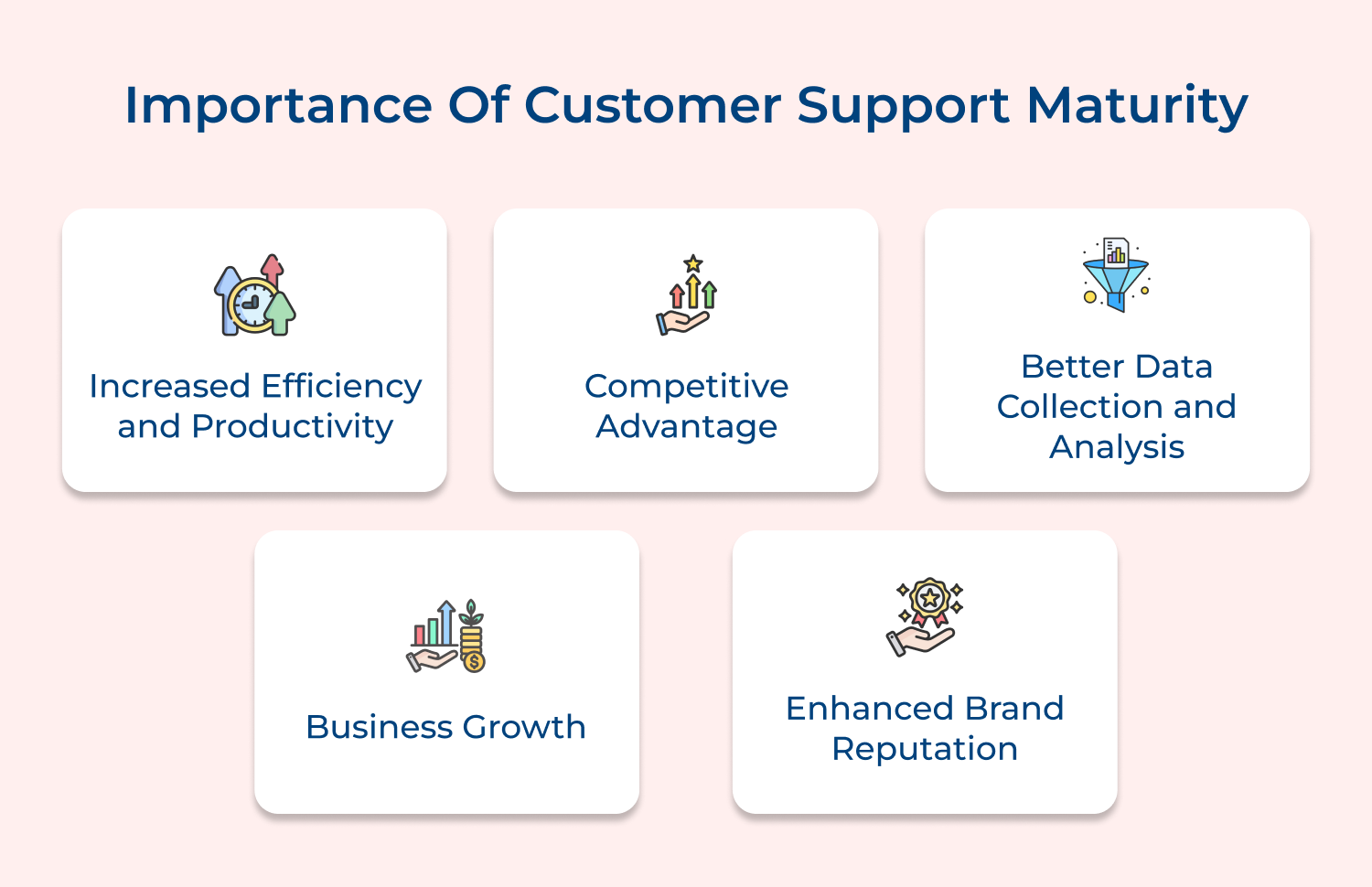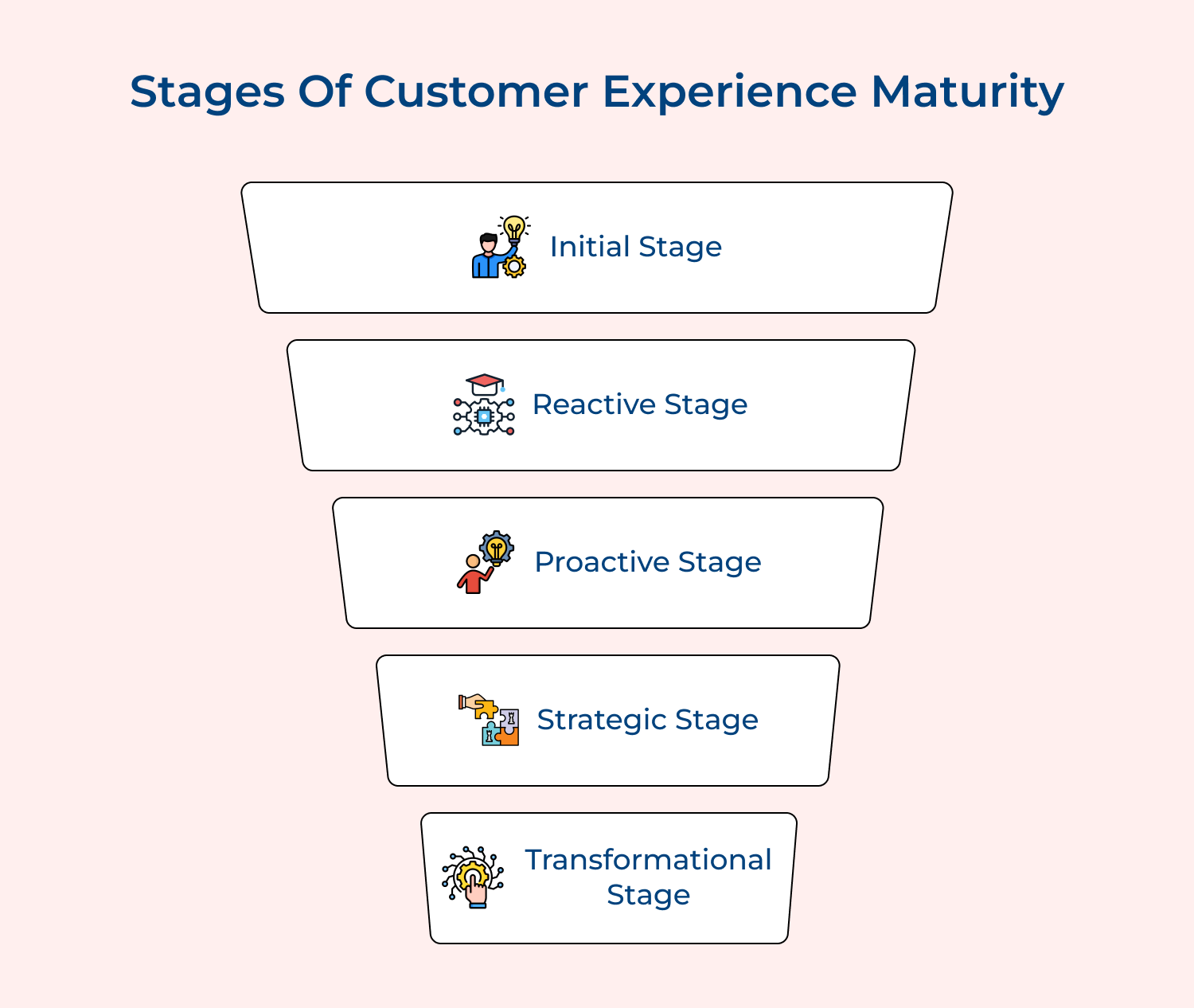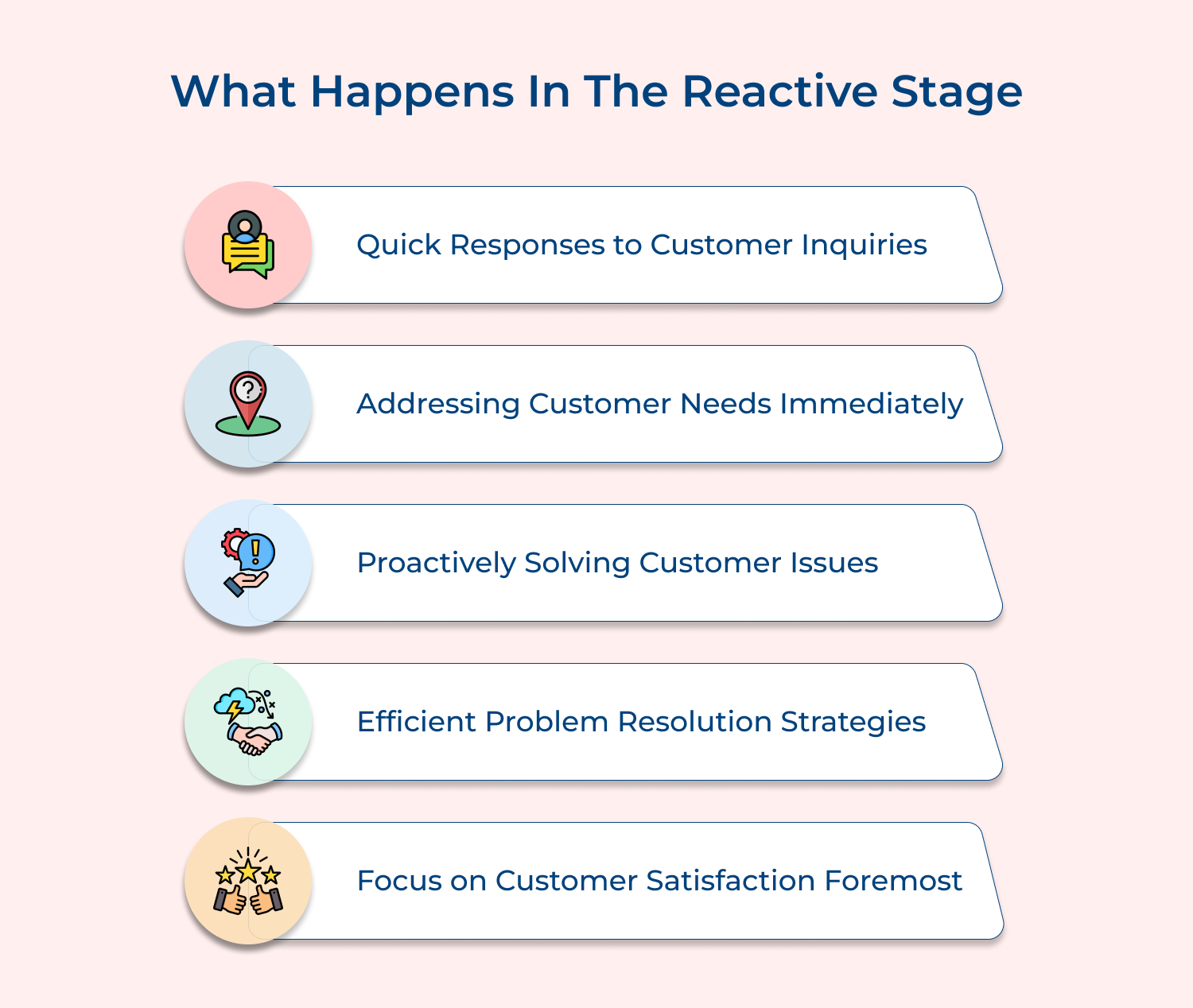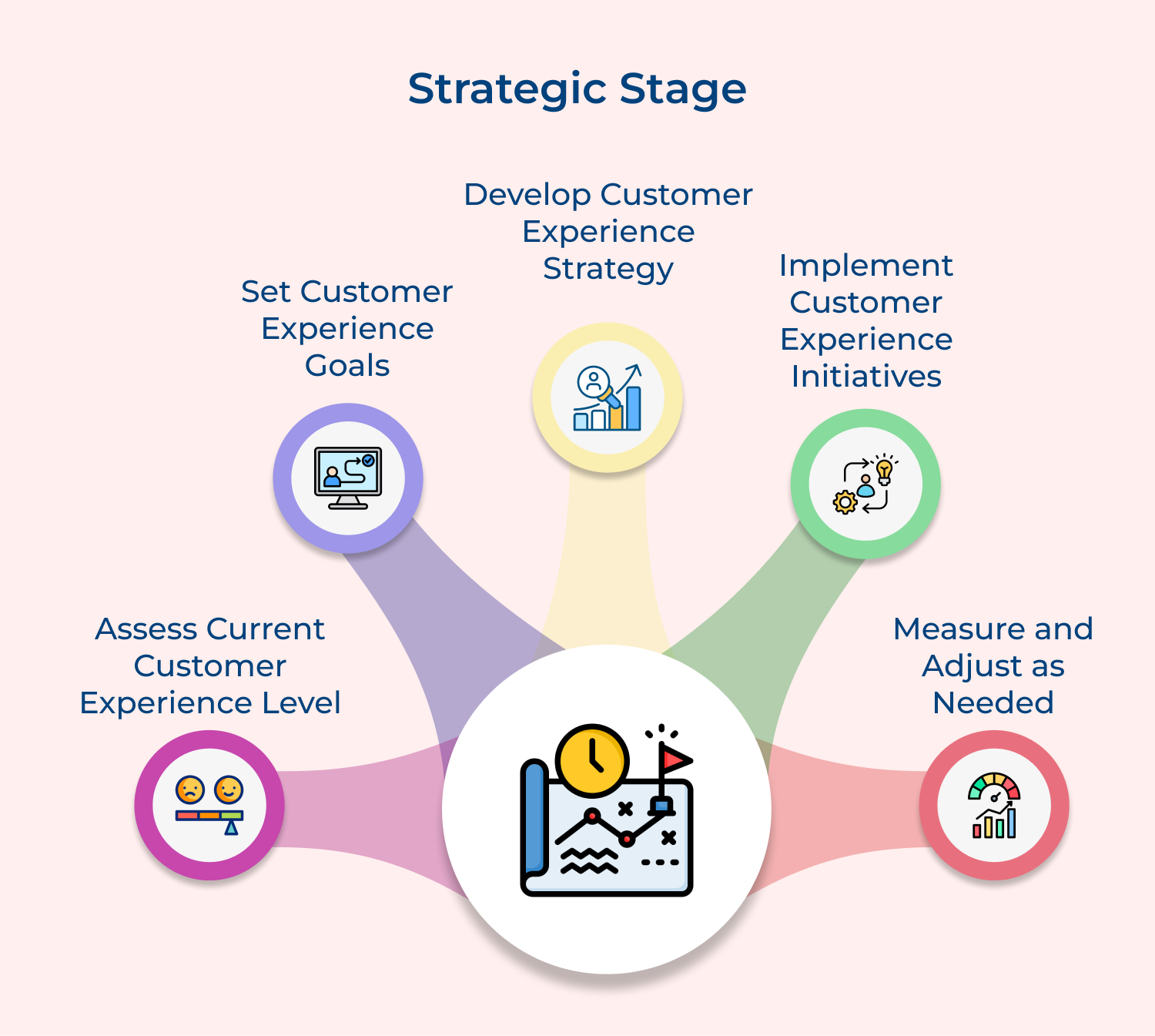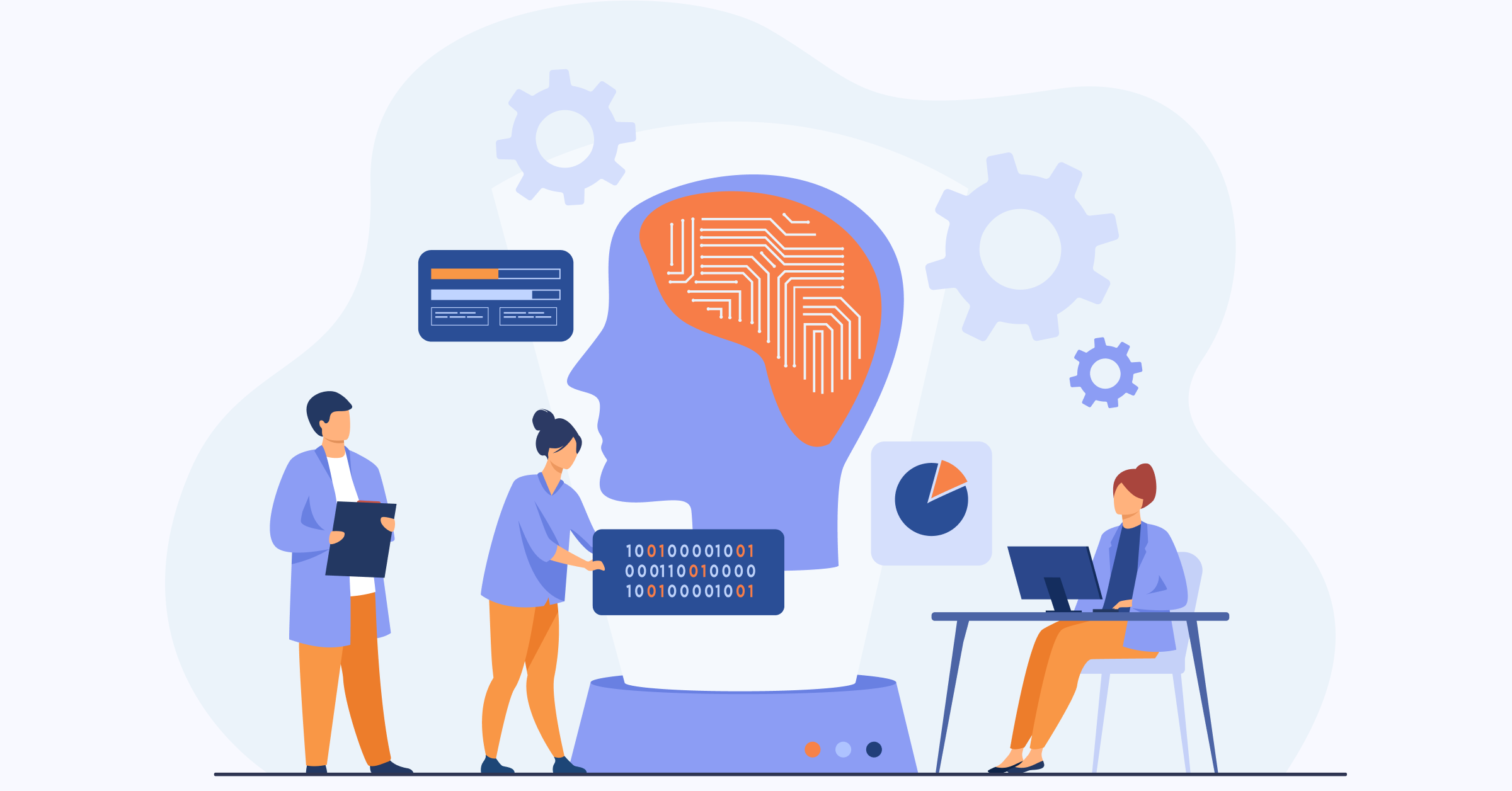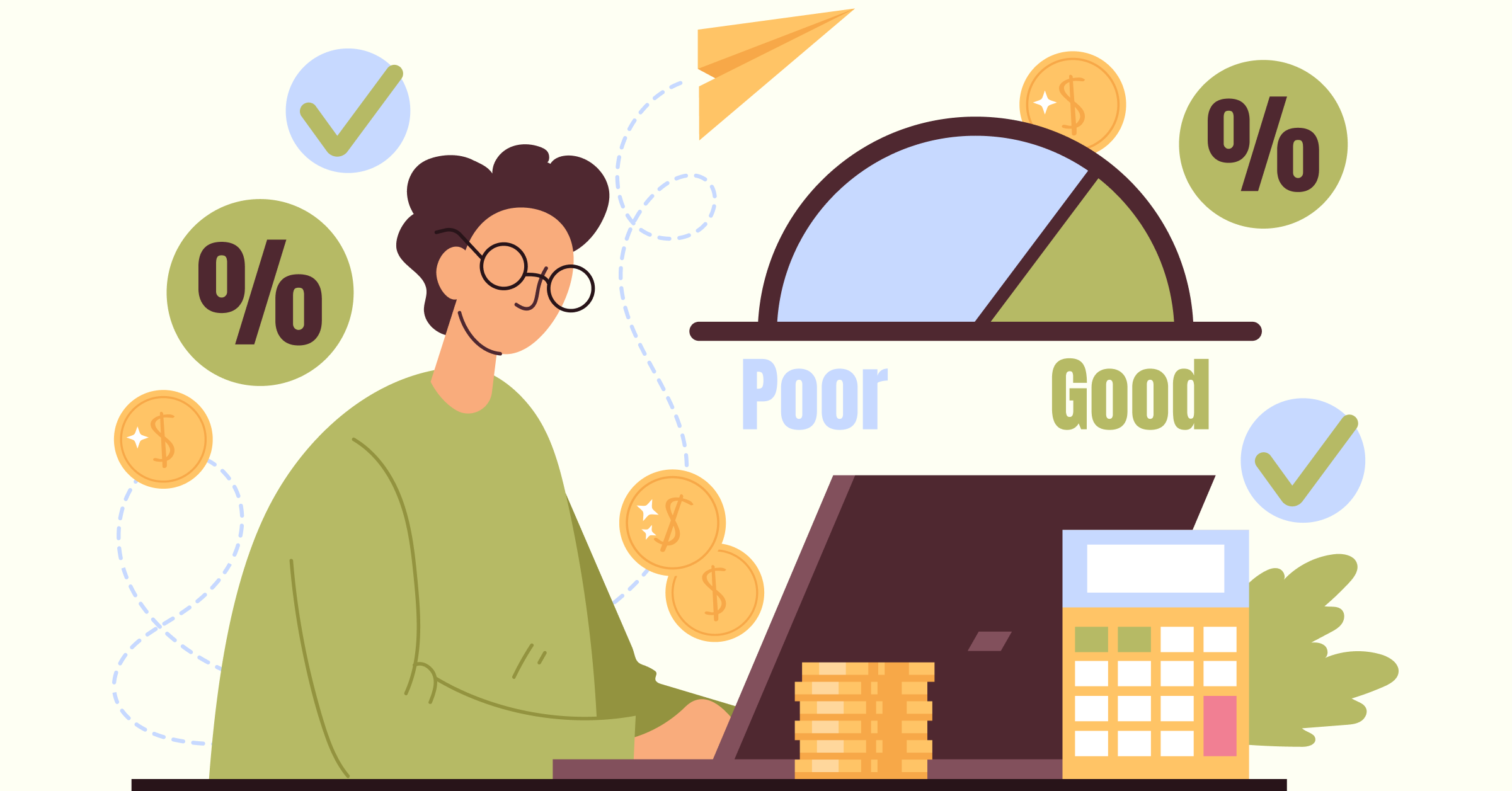- Assessment tools: These tools help businesses evaluate their current customer experience practices against specific criteria or benchmarks. They may include surveys, questionnaires or scorecards to gather data and insights on various aspects of customer experience management.
- Best practice guides: These guides provide recommendations and strategies for advancing customer experience maturity. They may outline key principles, techniques and tactics that businesses can adopt to enhance their customer experience capabilities.
- Roadmap templates: Roadmap templates help businesses create a plan for advancing their customer experience maturity level. They typically include milestones, goals and action steps to guide the implementation of customer experience initiatives.
- Case studies and examples: These resources offer real-world examples of organizations that have successfully improved their customer experience maturity. They inspire and inform businesses looking to enhance their own customer experience efforts.
- Training resources: Training resources, such as webinars, workshops, or online courses help businesses build the skills and knowledge needed to implement customer experience best practices effectively.
Using a Customer Experience Maturity Model Toolkit can offer several benefits to businesses, including:
- Improved alignment: By clearly defining different levels of customer experience maturity, businesses can align their efforts and resources more effectively to achieve their customer experience goals.
- Targeted improvements: The toolkit helps businesses identify specific areas where they need to improve to advance their customer experience maturity level, enabling them to focus on the most critical areas for enhancement.
- Enhanced customer loyalty: Enhancing the customer experience capabilities enables businesses to increase customer satisfaction, leading to improved customer retention and advocacy.
Customer Service Maturity Examples
Customer service maturity is an important aspect of any successful business, regardless of the industry.
Salesforce
Salesforce is a leading provider of customer relationship management (CRM) software and is known for its exceptional customer service. They offer a range of support options, personalized training programs and regular check-ins to ensure that their clients get the most out of their services. Salesforce continuously collects feedback from clients and uses it to improve their products as well as services.
Adobe
Customer service maturity is key to ensuring users have a positive experience with the product. One software company known for their exceptional customer service is Adobe. They offer 24/7 customer support, online tutorials and regular updates to their software to address user feedback. Adobe also has a user community where customers can share tips and tricks with each other, creating a sense of camaraderie among users.
IKEA
IKEA is a well-known example of customer service maturity in the furniture industry. IKEA has a dedicated customer service hotline, online chat support and a comprehensive returns policy. They also offer home delivery and assembly services for customers who need assistance with their furniture purchases.
Samsung
Samsung is a standout example of a home appliance manufacturer with a strong focus on customer service maturity. Samsung offers a range of after-sales support services, including remote troubleshooting, product repairs and warranty extensions. They also have a dedicated customer support team that is available around the clock to assist with any customer queries or concerns.
Elevate Your Business with CX Maturity Assessment
In conclusion, taking the time to assess your business’s Customer Experience (CX) maturity can truly elevate your company to the next level. By understanding where you currently stand in terms of CX and identifying areas for improvement, you can enhance the overall customer journey as well as increase customer satisfaction.
Utilizing tools such as CX maturity assessments can provide valuable insights and guidance on how to create a more customer-focused approach within your organization. With a strong focus on CX, you can stay ahead of the competition, build customer loyalty and drive business growth. So, don’t delay, start assessing your CX maturity today and watch your business thrive.

